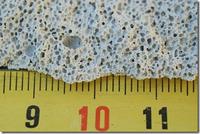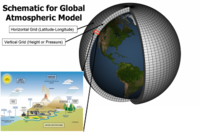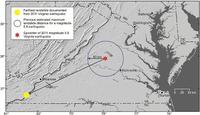-
Nor'easter batters NYC, New Jersey
A nor’easter battered New York and New Jersey on Wednesday with rain and wet snow, plunging homes back into darkness, stopping commuter trains, and inflicting yet more misery on thousands of people still trying to recover from Superstorm Sandy; ordinarily, the nor’easter would not pose major problems, but this was not the case yesterday, as the storm hit an area where electrical systems were still fragile and many of Sandy’s victims still busy cleaning their homes and coping with deepening cold
-
-
MIT researchers develop method to help communities plan for climate risk
As the devastation left by Sandy continues to reverberate, decision-makers at every level are asking: How can we be better prepared? MIT researchers developed a tool to assess regional risks of climate change and potential impacts on local infrastructure and planning; the tool helps policymakers, city planners, and others see the possible local effects of climate change, such as long-term temperature and precipitation changes, allowing local planners to evaluate risks, and how these risks could shape crops, roads, and energy infrastructure
-
-
Building material of millennium: Autoclave Aerated Concrete

Although widespread rebuilding in the hard-hit New York metro region from Hurricane Sandy has not yet begun, New Jersey Institute of Technology (NJIT) scientists say when the hammers start swinging, it is time to look at autoclaved aerated concrete; the material, best known as AAC, has been heralded as the building material of the new millennium
-
-
Nanostructured material stronger than a speeding bullet
Providing protection against impacts from bullets and other high-speed projectiles is more than just a matter of brute strength; while traditional shields have been made of bulky materials such as steel, newer body armor made of lightweight material such as Kevlar has shown that thickness and weight are not necessary for absorbing the energy of impacts; new tests of nanostructured material could lead to better armor against everything from gunfire to micrometeorites
-
-
DARPA seeks multi-band, portable sensor to provide soldiers with clear images
Clip-on or helmet-mounted camera system would fuse useful aspects of visible, near infrared, and infrared images into a single shot under all weather and visibility conditions; the Pixel Network for Dynamic Visualization program, or PIXNET, technology would ingest the most useful data points from each component sensor and fuse them into a common, information-rich image that can be viewed on the soldier’s heads-up display, and potentially be shared across units
-
-
The limitations of climate models

How accurate is the latest generation of climate models? Climate physicists have compared them with old models and draws a differentiated conclusion: while climate modeling has made substantial progress in recent years, we also need to be aware of its limitations
-
-
Scientists resurrect process to convert sugar directly to diesel

A long-abandoned fermentation process once used to turn starch into explosives can be used to produce renewable diesel fuel to replace the fossil fuels now used in transportation; the retooled process produces a mix of products that contain more energy per gallon than ethanol that is used today in transportation fuels and could be commercialized within 5-10 years
-
-
Inflatable giant plugs could have saved NYC subway system

Inflatable plugs being developed with funding from DHS, could have saved some of New York’s subway and highway tunnels from flooding during Hurricane Sandy, according to the developers of the plugs; DHS successfully tested a plug earlier this year, using a 16-foot diameter prototype to hold back pressurized water at a test tunnel in Morgantown, West Virginia; the idea was originally intended to protect tunnels from terrorist attacks
-
-
Dutch flood-protection may be suitable for New York, other East Coast cities

Megastorms and disasters are not going to continue to be once in a lifetime storms, but instead become more of an annual occurrence; experts say that the combination of more frequent megastorms and rising sea levels across the east coast would forcemany cities to get serious about flood protection
-
-
New strategy for fingerprint visualization
Identifying fingerprints on paper is a commonly used method in police forensic work, but it is not easy to make those fingerprints visible. Now, scientists have developed a new approach for making such fingerprints more readily readable
-
-
Long-term sea level rise could cost Washington, D.C. billions
New study projects that the city of Washington, D.C., and federal property in the city, could suffer billions of dollars in damage if sea level rise as a result of global warming increases over the next century. Potential for significant damage will be even greater in the event of extreme weather like Hurricane Sandy
-
-
2011 Virginia quake triggered landslides very far away

The 2011 Mineral, Virginia M-5.8 earthquake was felt over an extraordinarily large area; a new study details landslides triggered by the earthquake at distances four times greater and over an area twenty times larger than previously documented for M-5.8 earthquakes worldwide
-
-
Indian monsoon failure more frequent with warming
Global warming could cause frequent and severe failures of the Indian summer monsoon in the next two centuries, new research suggests; the effects of these unprecedented changes would be extremely detrimental to India’s economy which relies heavily on the monsoon season to bring fresh water to the farmlands
-
-
NY, NJ brace for nor’easter
East Coast resident are still coping with the destruction wreaked by Hurricane Sandy, but now they have to prepare for another potentially destructive storm – a nor’easter which is expected to hit New York and new Jersey on Wednesday; the nor’easter will likely stay 50-100 miles off shore, but its western edges will bring winds of up to 55 mph, coastal flooding, up to two inches of rain along the shore, and several inches of snow to Pennsylvania and New York
-
-
Many NYC buildings to remain closed for weeks, months for clean-up, repairs
Water and winds produced by Hurricane Sandy destroyed mechanical and electrical systems in many commercial and residential buildings in Lower Manhattan; as a result, many buildings in the area are weeks or months away from being repaired and fully operational
-
More headlines
The long view
Autonomous Vehicle Technology Vulnerable to Road Object Spoofing and Vanishing Attacks
Researchers have demonstrated the potentially hazardous vulnerabilities associated with the technology called LiDAR, or Light Detection and Ranging, many autonomous vehicles use to navigate streets, roads and highways. The researchers have shown how to use lasers to fool LiDAR into “seeing” objects that are not present and missing those that are – deficiencies that can cause unwarranted and unsafe braking or collisions.
Tantalizing Method to Study Cyberdeterrence
Tantalus is unlike most war games because it is experimental instead of experiential — the immersive game differs by overlapping scientific rigor and quantitative assessment methods with the experimental sciences, and experimental war gaming provides insightful data for real-world cyberattacks.
Prototype Self-Service Screening System Unveiled
TSA and DHS S&T unveiled a prototype checkpoint technology, the self-service screening system, at Harry Reid International Airport (LAS) in Las Vegas, NV. The aim is to provide a near self-sufficient passenger screening process while enabling passengers to directly receive on-person alarm information and allow for the passenger self-resolution of those alarms.
Falling Space Debris: How High Is the Risk I'll Get Hit?
An International Space Station battery fell back to Earth and, luckily, splashed down harmlessly in the Atlantic. Should we have worried? Space debris reenters our atmosphere every week.
Testing Cutting-Edge Counter-Drone Technology
Drones have many positive applications, bad actors can use them for nefarious purposes. Two recent field demonstrations brought government, academia, and industry together to evaluate innovative counter-unmanned aircraft systems.
Strengthening the Grid’s ‘Backbone’ with Hydropower
Argonne-led studies investigate how hydropower could help add more clean energy to the grid, how it generates value as grids add more renewable energy, and how liner technology can improve hydropower efficiency.
